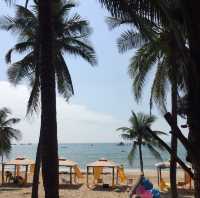This is where the boundary between Wu and Yue exists. It belongs to Yue in the South and Wu in the north. At that time, the State of Yue used to fortify Shimen in case of Wu. Wu also set up a stockade here to resist Yue. Later, the two sides built residential buildings with this boundary, and gradually formed a lane, named Bashilang.
Leishi Lane Review
3.1 /511 Reviews






4/5
Leishi Lane
Posted: Aug 8, 2015
Like
Recommended Attractions at Popular Destinations
Bangkok attraction near me | Tokyo attraction near me | Manila attraction near me | Hong Kong attraction near me | Taipei attraction near me | Seoul attraction near me | Los Angeles attraction near me | New York attraction near me | Shanghai attraction near me | Kuala Lumpur attraction near me | Shenzhen attraction near me | Osaka attraction near me | Singapore attraction near me | London attraction near me | Guangzhou attraction near me | San Francisco attraction near me | Beijing attraction near me | Macau attraction near me | Bali attraction near me | Paris attraction near me | Ho Chi Minh City attraction near me | Orlando attraction near me | Jakarta attraction near me | Chicago attraction near me | Phuket attraction near me | Toronto attraction near me | Fukuoka attraction near me | Istanbul attraction near me | Dallas attraction near me | Chiang Mai attraction near me
Popular Attractions
Monument to the Independence of Brazil | VanDusen Botanical Garden | Yuanmingyuan Park | Pearl Harbor | Oriental Pearl Radio & Television Tower | Jinshanling Great Wall | National Museum of Singapore | Shenyang Fantawild Adventure | Chengdu Happy Valley | Plaža poštenja | Layag Hill Peak | Sungtseling | GREEN TURTLE HIGHLAND RESORT | Negeri Diatas Awan Bogor | Kakolat Waterfalls | Anfu Road | Lisbon Central Mosque | Momchilovtsi Herb Garden | Multi Treasure Pagoda of Glazed Tiles | Gangamma Temple | Margaret Haughery Statue | Jama Masjid جامع مسجد | Reserve at Sawgrass Pool & Park | Masjid Al Ikhlas | Kaple | Byparken | BioSaludable Jhon F. Kennedy Jordan 1 Etapa Park | Ton Phueng Sub District Administration Organization | Shri Ram Mandir | Prasat Ta Tnur
Payment Methods
Our Partners
Copyright © 2024 Trip.com Travel Singapore Pte. Ltd. All rights reserved
Site Operator: Trip.com Travel Singapore Pte. Ltd.
Site Operator: Trip.com Travel Singapore Pte. Ltd.




